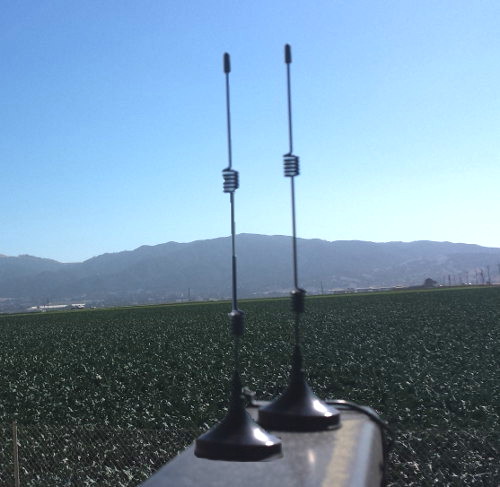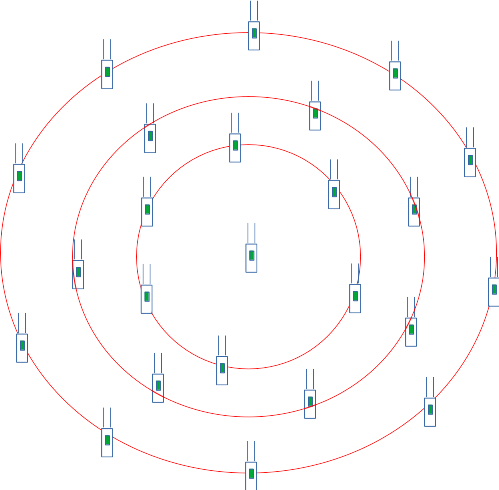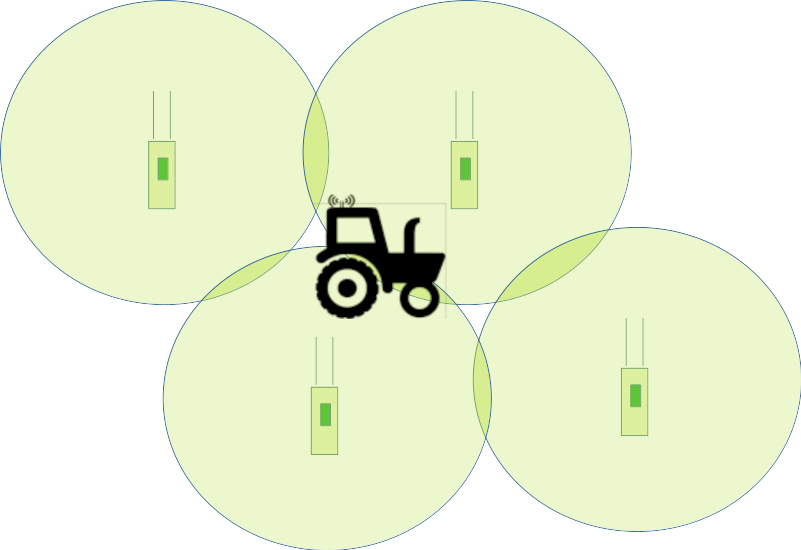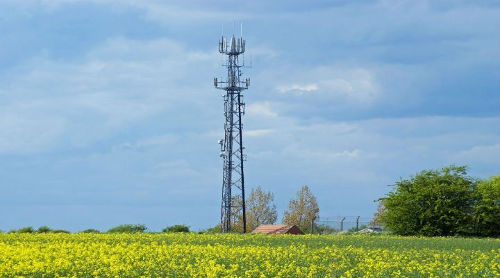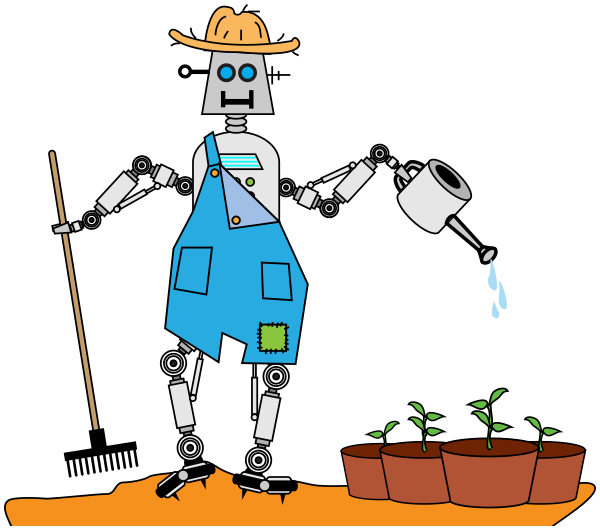
In the first article of this series, we covered how the AyrMesh HubDuo can be used to provide a relatively dense, continuous “cloud” of WiFi over a relatively small area (hundreds to low thousands of acres). In the second article in this series, we covered how to use the AyrMesh Hub2 series (the AyrMesh Hub2x2 and Hub2T) to create a “sparse” mesh across a huge area – many thousands of acres.
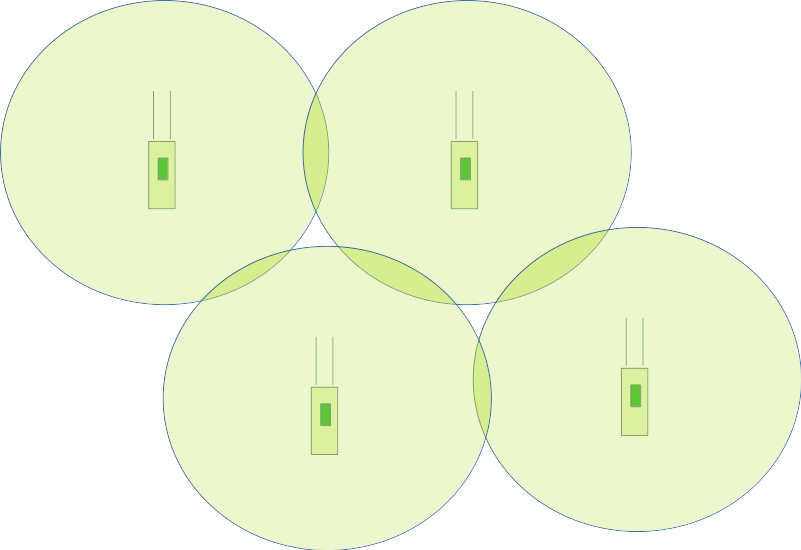
However, you don’t have to choose one or the other. The AyrMesh HubDuo has a “Hybrid mode” that allows it to create a “close in” mesh between nearby HubDuo units for a relatively “dense” mesh and a mesh with distant Hub2 Units for a “sparse” mesh across your fields.
The way it does this is that it uses the 5.8 GHz. radio for the “close,” dense mesh and the 2.4 GHz. radio for the farther “sparse” mesh. The Gateway Hub has to be an AyrMesh HubDuo, because the Gateway turns the meshing for both radios on. The Remote HubDuos only have the 5.8 GHz. mesh radio on (they still have WiFi on both bands) and the Hub2 units further away, of course, only use 2.4 GHz.
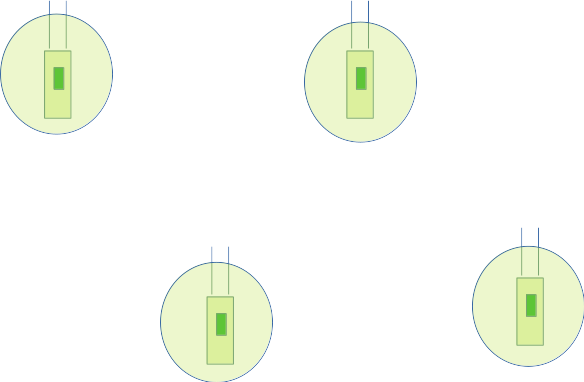
This gives you the option of starting with one option and later including the other – you’re not “trapped” with either. Even if you start with a “sparse” mesh using a Hub2 as your Gateway Hub, you can replace it with a HubDuo, expand the “close” network using additional HubDuos, and use the Hub2 as a Remote elsewhere on the farm. Any Hub can serve either role.
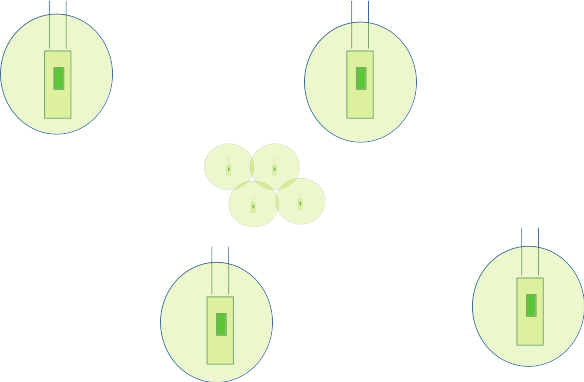
The AyrMesh WiFi Mesh is flexible and modular, designed to provide you with a way to cover the ground you need with strong, reliable WiFi. Once you have the network for one purpose, whether it’s to provide WiFi in your farmyard or across your fields, you may discover just how handy it is in other places. The modularity of AyrMesh allows you to quickly and easily extend your network as needed.
Please let us know in the comments what you think about this – are we on the right track, or are there other things you’d like to see? What benefits have you seen from extending your network? What has kept you from expanding your AyrMesh network further?

